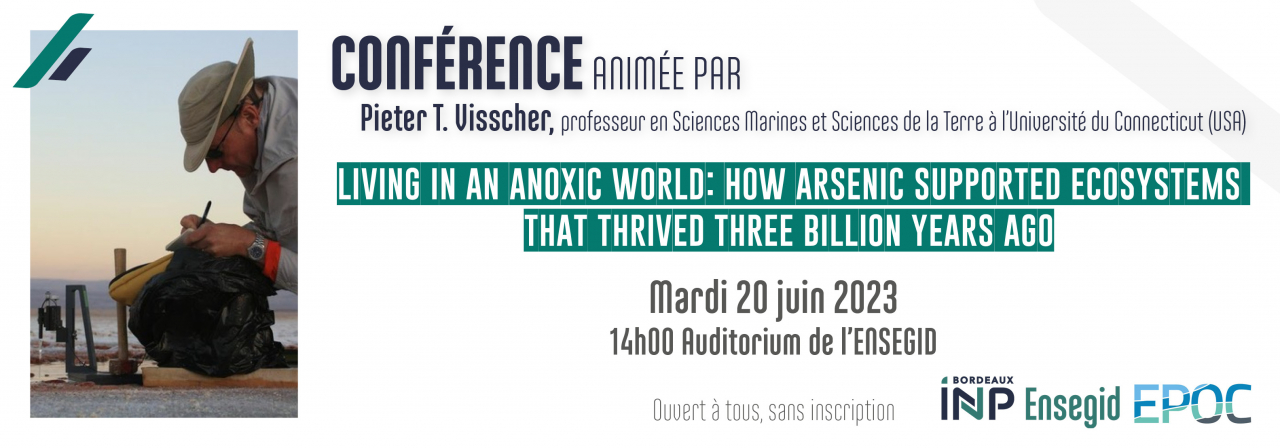Vous êtes ici
Conférence Pieter T. Visscher "Living in an anoxic world: How arsenic supported ecosystems that thrived three billion years ago"

ABSTRACT
The earliest evidence of life on our planet is arguably captured in 3.5-billion-year-old fossil stromatolites. These layered carbonate rocks formed through precipitation of carbonate minerals in microbial mats. Today, stromatolites and microbial mats still thrive in extreme environments. Consequently, they considered to be the oldest and most resilient ecosystems known.
Most modern microbial mats and stromatolites are dominated by cyanobacteria. These cyanobacteria “invented” oxygenic photosynthesis that led to the Great Oxygenation Event ~2.3 billion years ago. The lithification of microbial mats is due to the entire community metabolism including viruses, but the cyanobacterial photosynthesis plays the crucial role. The question arises how stromatolites formed during the first 1.5 billion years of their dominance on Earth, before oxygenic photosynthesis. Ferrous iron, hydrogen and sulfur can support so-called anoxygenic photosynthesis. However, evidence for these chemical elements to support phototrophy is controversial in the Archean record, and thermodynamic considerations also rule out some of these alternative electron donors.
We found evidence for arsenic metabolism in the 2.72 billion stromatolites (Tumbiana Formation, Pilbara, Western Australia). Submicrometer-size element maps indicated that not iron or sulfur but arsenic cycling was associated with organic carbon. Recently, we discovered a microbial mat system in the southern Atacama Desert, Chile, that was thriving under early-Earth like conditions. In the permanent absence of oxygen, sulfur and arsenic cycling were coupled to calcium carbonate precipitation. Sulfide and arsenite oxidation supported photosynthesis and sulfate and arsenate reduction were major respiration pathways in these permanent anoxic mats. Thermodynamic calculations show that arsenic cycling is energetically preferred over sulfur when both elements are present. Interestingly, arsenic cycling has a much greater potential to precipitate calcium carbonate, leading to more rapid stromatolite growth. In addition to supporting respiration with organic carbon or hydrogen, arsenate also can mediate the anaerobic oxidation of methane.
The distribution of different oxidation states of elements was mapped with a 30-nm resolution using a combination of X-ray fluorescence – XANES (X-ray absorption near-edge structure). The presence of both As(III) and As(V) in close proximity found in the Atacama mats could be the strongest line of evidence for arsenic cycling if also discovered in ancient stromatolites. The PIXL instrument on the Mars Perseverance rover uses a similar technique and perhaps will find evidence of extinct or extant arsenic-support life on the Red Planet.
QUI EST Pieter T. Visscher ?
Pieter T. Visscher est professeur en Sciences Marines et Sciences de la Terre à l'Université du Connecticut (États Unis). Pieter est un spécialiste de la géomicrobiologie des systèmes sédimentaires, des interactions microbe-minéral, de la diagenèse, des gaz en traces et des biosignatures. Il est le co-fondateur de l'Institut d'Astrobiologie de la NASA, Fellow de la Geological Society of America et le fondateur et directeur du Center for Integrative Geosciences de l'Université du Connecticut. Il réalise un séjour d'un mois en tant que professeur invité à l'Ensegid-Bordeaux INP
Se rendre à l'ENSEGID : Plan du campus